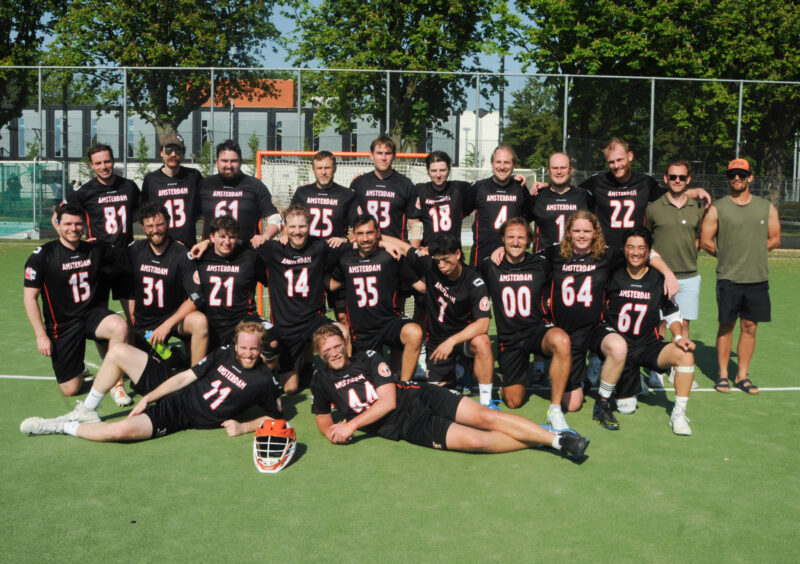The Crosse
There are ten players on each team: three attackers, three midfielders, three defenders and a goalie. Each player carries a lacrosse stick. A “short crosse” is called a “short stick” and measures between 1,0 meter and 1,1 meter long (head and shaft together) and is typically used by attackers or midfielders. A maximum of four players per team may carry a “long crosse” called a “long pole” which is 1,3 meter to 1,8 meter long; typically used by defenders or midfielders. The head of the crosse on both long and short crosses must be 17 centimeter or larger at its widest point. The throat of the lacrosse head must be at least 7,6 centimeter wide. The designated goalkeeper is allowed to have a stick from 1,0 meter to 1,8 meter long and the head of a goalkeeper’s crosse may measure up to 30 centimeter wide, significantly larger than field players’ heads, to assist in blocking shots.
The Field
The field we are playing on in The Netherlands are typically hockey and soccer fields. A field of play is a minimum 100 meters long and 50 meters wide. The goal sits inside a circular “crease”, measuring 5,5 meter in diameter. Each offensive and defensive area is surrounded by a “restraining box.”

The Face-off
Each quarter, and after each goal scored, play is restarted with a face-off. During a face-off, two players lay their stick horizontally next to the ball, head of the stick centimeters from the ball and the butt-end pointing down the midfield line. Face-off-men scrap for the ball, often by “clamping” it under their stick and flicking it out to their teammates. Attackers and defenders cannot cross their “restraining line” until one player from the midfield takes possession of the ball or the ball crosses the restraining line. If a member of one team touches the ball and it travels outside of the playing area, play is restarted by awarding possession to the opposing team.
The Play
During play, teams may substitute players in and out freely. Sometimes this is referred to as “on the fly” substitution. Substitution must occur within the designated exchange area (often called “the box”) in order to be legal.
The Penalties
For most penalties, the offending player is sent to the penalty box, which is located between each team’s bench. Technical fouls (such as offsides and holding) result in either a turnover or a player’s suspension of 30 seconds, while personal fouls are generally penalized one minute. The team that has taken the penalty is said to be playing man down, while the other team is on the man up. Teams will use various lacrosse strategies to attack and defend while a player is being penalized. Offsides is penalized by a 30-second penalty. It occurs when there are more than 7 players on the defensive side of the field (three midfielders/three defensemen/one goalkeeper), or more than 6 players from one team on the offensive side of the field (three midfielders/three attack). The zones are separated by the midfield line.

